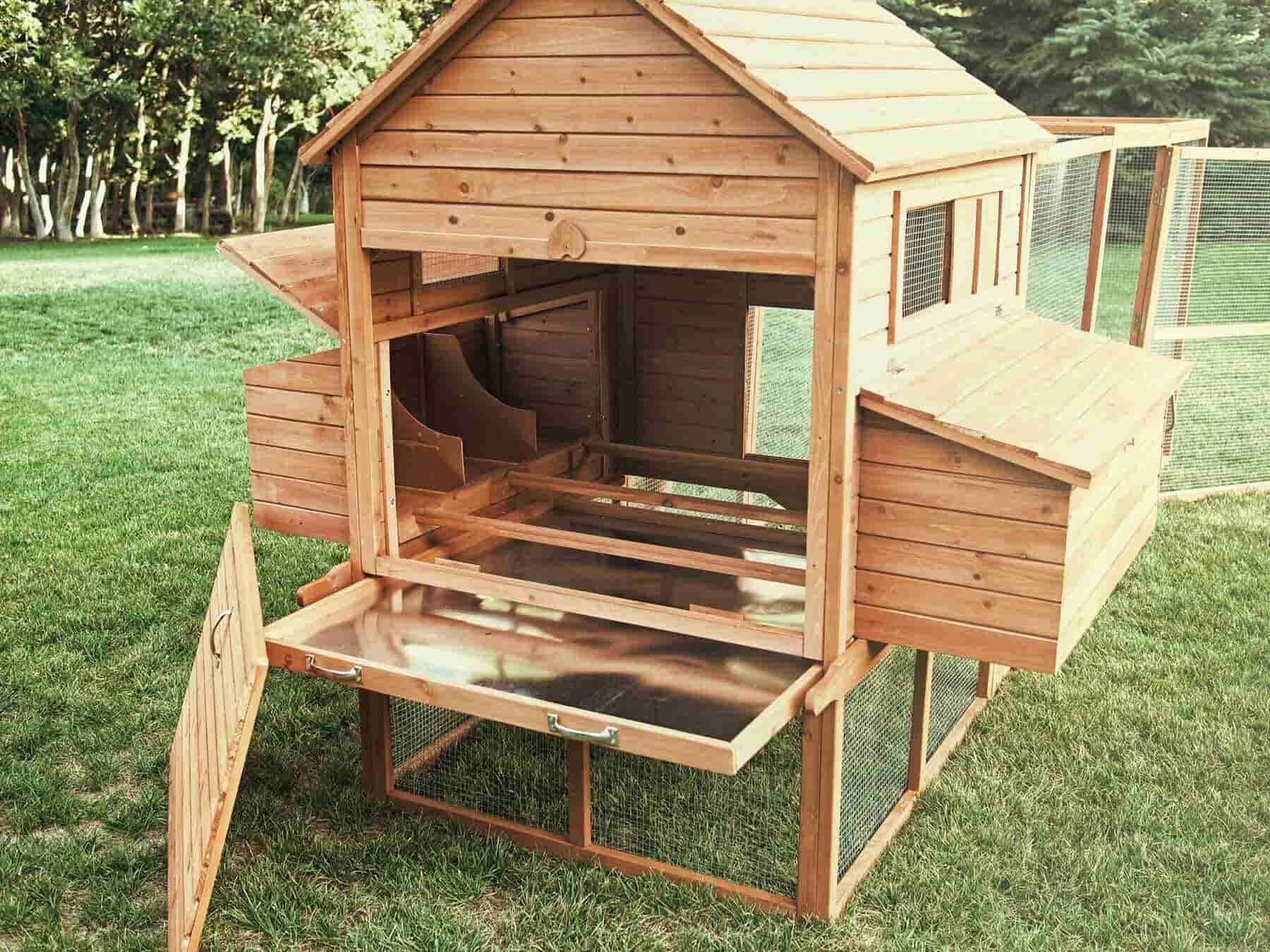Chicken Coop Designs

Types of Chicken Coop Designs
1. Traditional Coop
The traditional coop is a basic design that consists of a small house with a door and a few windows, and a fenced outdoor area. It is suitable for a small number of chickens and can be built with basic materials such as wood and wire mesh. However, it may not be the best option if you have a large flock or live in an area with extreme weather conditions.
2. Mobile Coop
A mobile coop, also known as a chicken tractor, is a portable design that allows you to move your chickens around your yard. It is a great option if you want your chickens to have access to fresh grass and insects, and if you don't want them to damage your lawn. However, it may require more maintenance and may not be suitable for all climates.
3. A-frame Coop
The A-frame coop is a triangular design that looks like an A-shaped tent. It is easy to build and can be moved around if needed. It is suitable for a small number of chickens, but it may not provide enough space for them to move around. It may also require more frequent cleaning due to its small size.
4. Multi-level Coop
The multi-level coop is a more complex design that consists of multiple levels and compartments. It provides more space for your chickens to move around and can accommodate a larger flock. However, it may be more expensive and difficult to build, and may require more maintenance.
Choosing the Best Chicken Coop Design
When choosing a chicken coop design, consider the following factors:
1. Number of Chickens
The size of your chicken coop will depend on the number of chickens you have. Make sure that your chickens have enough space to move around and lay eggs comfortably.
2. Climate
Consider the climate in your area and choose a design that will provide enough ventilation and insulation for your chickens. For example, if you live in a cold climate, you may need to insulate your coop and provide a heat source in the winter.
3. Maintenance
Consider how much time and effort you are willing to put into maintaining your chicken coop. Some designs may require more cleaning and upkeep than others.
4. Budget
Consider your budget and choose a design that fits within your price range. Keep in mind that some designs may require more expensive materials or professional installation.
Advantages and Disadvantages of Chicken Coop Designs
| Design | Advantages | Disadvantages |
|---|---|---|
| Traditional Coop | Easy to build, affordable | May not be suitable for extreme weather conditions |
| Mobile Coop | Allows chickens to access fresh grass and insects, portable | May require more maintenance, not suitable for all climates |
| A-frame Coop | Easy to build, portable | May not provide enough space for chickens to move around |
| Multi-level Coop | Provides more space for chickens, can accommodate a larger flock | More expensive and difficult to build, may require more maintenance |
FAQ
1. How many chickens can I keep in a chicken coop?
The number of chickens you can keep in a chicken coop depends on the size of the coop and the size of the chickens. As a general rule, you should provide at least 2-3 square feet of space per chicken.
2. Do I need to insulate my chicken coop?
It depends on the climate in your area. If you live in a cold climate, you may need to insulate your coop to keep your chickens warm in the winter. If you live in a hot climate, you may need to provide enough ventilation to keep your chickens cool in the summer.
3. How often do I need to clean my chicken coop?
You should clean your chicken coop at least once a week, or more frequently if needed. Remove any soiled bedding and replace it with fresh bedding. Scrub the coop with a mild detergent and rinse it thoroughly with water.
4. Can I build my own chicken coop?
Yes, you can build your own chicken coop with basic materials such as wood, wire mesh, and roofing materials. However, if you are not comfortable with building, you can also purchase a pre-made coop or hire a professional to build one for you.
In conclusion, choosing the best chicken coop design requires careful consideration of your needs, budget, and climate. Whether you choose a traditional coop, a mobile coop, an A-frame coop, or a multi-level coop, make sure that your chickens have enough space, ventilation, and insulation to live comfortably and safely.
